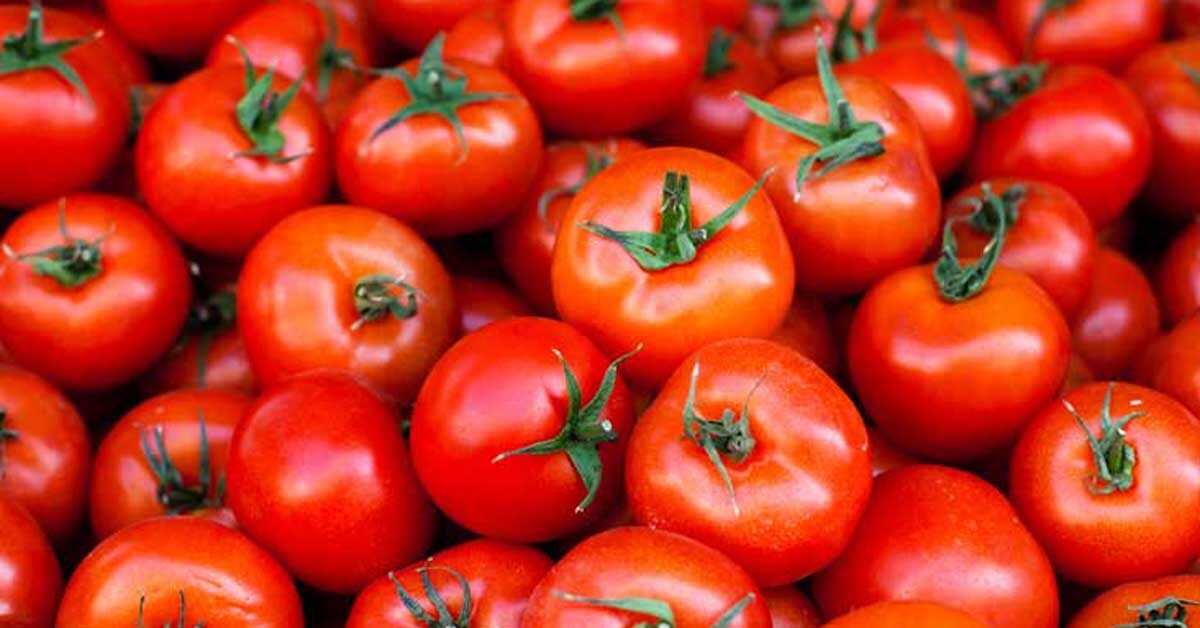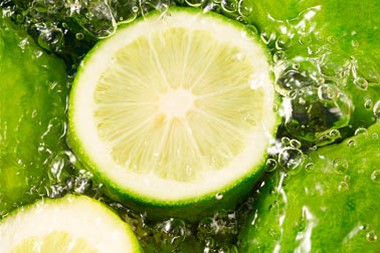Tomato Juice Powder is a popular ingredient used in various food and beverage products. It is often marketed as a convenient and versatile alternative to fresh tomatoes. However, there is a significant difference between it and fresh tomatoes in terms of composition and characteristics. In this article, we will explore the distinctions between it and tomatoes themselves.
it is derived from tomatoes through a process that involves dehydration and pulverization. The fresh tomatoes are first washed, peeled, and deseeded. Then, they are concentrated to remove most of the water content, resulting in a thick tomato paste. This paste is further dehydrated using methods like spray drying or freeze drying to create a powdered form.
One of the key advantages of it is its extended shelf life. Fresh tomatoes are perishable and have a relatively short shelf life, making them less suitable for certain applications. it, on the other hand, has a significantly longer shelf life and can be stored and transported more easily. It also offers convenience as it can be readily rehydrated and used as a substitute for fresh tomato juice or tomato paste.
In terms of flavor, it retains much of the characteristic taste of tomatoes. The dehydration process does concentrate the flavors, resulting in a more intense tomato flavor compared to fresh tomatoes. This concentrated flavor can be advantageous in certain culinary applications where a strong tomato taste is desired. However, it is important to note that the flavor profile may differ slightly from fresh tomatoes due to the drying process.
The texture of it also differs from that of fresh tomatoes. While fresh tomatoes are juicy and have a soft, fleshy texture, it lacks the moisture and texture of its fresh counterpart. It is a fine, dry powder that easily dissolves in liquids, making it suitable for adding tomato flavor to soups, sauces, beverages, and other products.
Another aspect to consider is the nutritional composition. Fresh tomatoes are known for their high water content and are a good source of essential nutrients such as vitamins A and C, potassium, and lycopene, which is a powerful antioxidant. it, however, may have a reduced nutrient content due to the dehydration process. Some vitamins and minerals may be lost or diminished during processing, although the powder can still contain beneficial compounds like lycopene.
It is important to note that the use of it should not be seen as a complete replacement for fresh tomatoes in all situations. Fresh tomatoes provide a distinct sensory experience, and their moisture and texture are often desirable in many recipes. Additionally, fresh tomatoes offer a range of health benefits that may not be fully replicated in powdered form.
In conclusion, it and fresh tomatoes are not the same. it is a dehydrated and powdered form of tomatoes that offers convenience, extended shelf life, and concentrated flavors. However, it lacks the moisture, texture, and some of the nutritional benefits of fresh tomatoes. The choice between the two depends on the specific application and desired outcome, as each has its unique characteristics and advantages.

How to Make Tomato Powder: A Guide to the Process
Tomato powder is a versatile ingredient that can be used in various culinary applications. It is a convenient way to incorporate the flavor and nutrients of tomatoes into recipes, and it has a longer shelf life compared to fresh tomatoes. In this guide, we will explore the process of making it, from selecting the right tomatoes to the final steps of powdering.
1. Selecting the Right Tomatoes:
To make high-quality tomato powder, it is important to start with ripe and flavorful tomatoes. Look for tomatoes that are firm, evenly colored, and free from any signs of rot or damage. Varieties such as Roma or plum tomatoes are commonly used for making it due to their dense flesh and low moisture content.
2. Preparing the Tomatoes:
Once you have selected the tomatoes, wash them thoroughly under running water to remove any dirt or debris. Pat them dry with a clean towel or paper towels. Next, remove the stems and any blemishes or bruises from the tomatoes. You can also choose to peel the tomatoes by blanching them in boiling water for a few seconds and then plunging them into an ice bath. However, this step is optional, and you can make it with the skins intact.
3. Drying the Tomatoes:
There are several methods you can use to dry tomatoes for making powder. Here are two popular techniques:
a. Oven Drying:Preheat your oven to a low temperature, around 140-150°F (60-65°C). Place the prepared tomatoes on a baking sheet lined with parchment paper, making sure they are spaced apart for proper air circulation. Leave the oven door slightly ajar to allow moisture to escape. Depending on the size and moisture content of the tomatoes, drying can take anywhere from 6 to 12 hours. Check the tomatoes periodically and rotate the trays if necessary for even drying.
b. Dehydrator Drying:
If you have a food dehydrator, it is an excellent tool for drying tomatoes. Arrange the tomatoes in a single layer on the dehydrator trays, leaving space between them. Set the dehydrator to a low temperature, around 135-145°F (57-63°C), and let it run for approximately 6 to 12 hours. Refer to the manufacturer's instructions for specific guidelines.
4. Grinding into Powder:
Once the tomatoes are fully dried, it's time to turn them into powder. There are different methods you can use for grinding:
a. Blender or Food Processor:
Break the dried tomatoes into smaller pieces and place them in a blender or food processor. Pulse until you achieve a fine powder consistency. You may need to do this in batches to ensure even grinding.
b. Coffee Grinder or Spice Mill:
If you have a coffee grinder or a spice mill dedicated to non-coffee use, it can be an efficient tool for grinding it. Break the dried tomatoes into smaller pieces and process them in small batches until you get a fine powder.
5. Storing it:
After grinding, transfer the it to an airtight container or jar. Store it in a cool, dry place away from direct sunlight. Properly stored it can retain its flavor and quality for up to a year.
Usage Tips:
- Tomato powder can be used as a seasoning in soups, stews, sauces, and marinades. It adds a concentrated tomato flavor to dishes.
- Mix it with water to make tomato paste or tomato sauce for recipes that call for it.
- Incorporate it into dry rubs or spice blends for a flavor boost.
- Sprinkle it over popcorn, roasted vegetables, or homemade chips for a savory twist.
Conclusion:
Making
it at home is a simple process that allows you to preserve the flavors of ripe tomatoes for extended use. By following the steps outlined in this guide, you can create a versatile ingredient that adds depth and richness to your culinary creations. Experiment with different recipes and enjoy the convenience of having it readily available in your kitchen.
Is Tomato Powder Good for Your Face?
In recent years, natural skincare products have gained immense popularity due to their perceived benefits and minimal side effects. One such product that has gained attention is tomato powder. Derived from dehydrated tomatoes, it is believed to offer numerous advantages for the skin. In this article, we will explore the potential benefits of it for facial skincare, discussing its properties, application methods, and potential effects.
Properties of Tomato Powder:
Tomato powder is rich in various nutrients and compounds that are beneficial for the skin. It contains vitamins A, C, and E, which are known for their antioxidant properties. These vitamins help protect the skin from environmental damage, reduce the appearance of fine lines and wrinkles, and promote a youthful complexion. Additionally, it is a natural source of lycopene, a powerful antioxidant that may contribute to skin health. Lycopene is known for its potential to reduce inflammation and protect against sun damage, which can help prevent premature aging.
Benefits for the Skin:
1. Brightens and evens out the complexion: Tomato powder is believed to have a brightening effect on the skin. The high vitamin C content aids in reducing dark spots, hyperpigmentation, and discoloration, resulting in a more even skin tone.
2. Controls excess oil: Individuals with oily or acne-prone skin may benefit from tomato powder's ability to regulate sebum production. The natural astringent properties of tomatoes help minimize the appearance of pores and control oiliness, promoting a clearer complexion.
3. Fights acne: it contains salicylic acid, a common ingredient in acne treatments. Salicylic acid helps unclog pores, reduce inflammation, and prevent acne breakouts. Its gentle exfoliating properties can also promote cell turnover, revealing smoother skin.
4. Hydrates and nourishes: The vitamins and minerals present in it contribute to the skin's hydration and nourishment. They help retain moisture, keeping the skin soft and supple, and may also contribute to a healthy skin barrier function.
Application Methods:
Tomato powder can be incorporated into various skincare routines. Here are a few common application methods:
1. Face mask: Mix it with water or other suitable ingredients, such as honey or yogurt, to create a paste. Apply the mask to your face, leave it on for 10-15 minutes, and then rinse off with lukewarm water. This method allows the nutrients in it to penetrate the skin and provide their benefits.
2. Exfoliating scrub: Combine it with a gentle exfoliant, such as sugar or oatmeal, and a carrier oil like almond or jojoba oil. Gently massage the mixture onto damp skin in circular motions, then rinse thoroughly. This exfoliating scrub helps remove dead skin cells and reveal a smoother complexion.
3. Toner or facial mist: Dilute it in water and transfer the mixture to a spray bottle. Use it as a toner or facial mist after cleansing to refresh and revitalize the skin throughout the day.
Conclusion:
Tomato Juice Powder has gained popularity in the skincare industry due to its potential benefits for the skin. It offers antioxidant properties, brightening effects, oil control, acne-fighting abilities, and hydration. When used properly and in accordance with one's skin type, it can be a valuable addition to a skincare routine. However, it's essential to remember that individual results may vary, and it is
always best to consult a skincare professional before incorporating new products into your routine.
Contact us:selina@ciybio.com.cn



